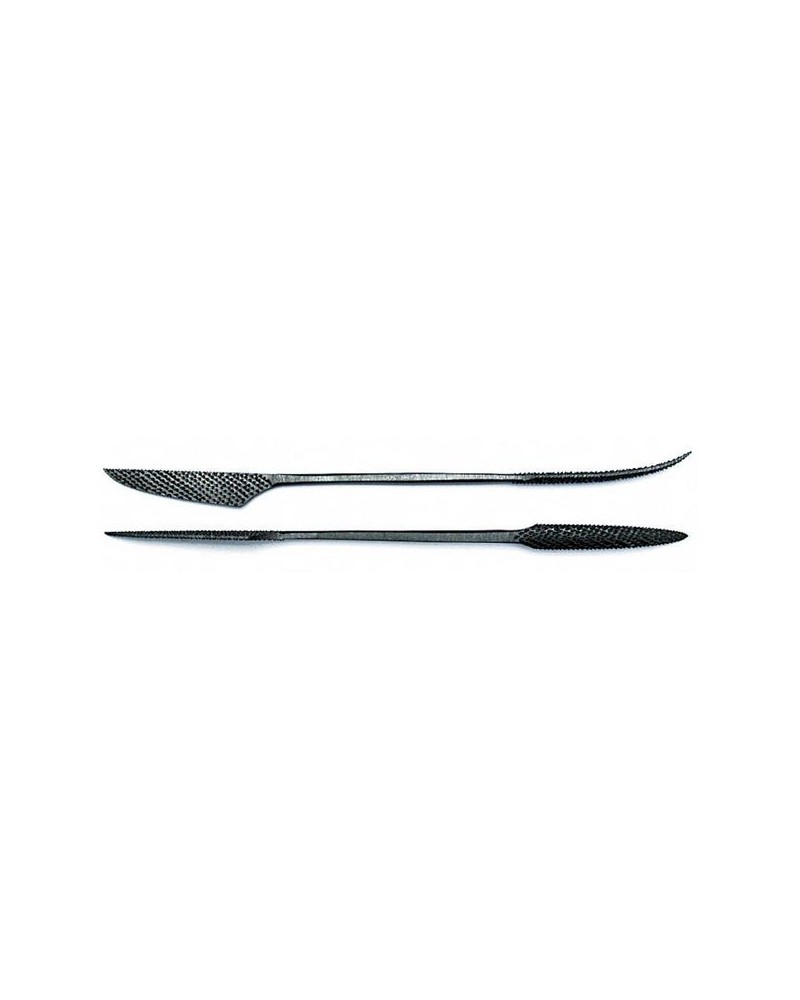
MILANI riffler rasp form 667
All prices incl. VAT, plus shipping costs.
For deliveries to countries other than Germany
the final prices may change in the checkout.
MORE INFO
We deliver fast - Postage free from 150 € (DE) - 60 days right of return - mail@bildhau.de - Tel.: +49 (0)221-99874700


All prices incl. VAT, plus shipping costs.
For deliveries to countries other than Germany
the final prices may change in the checkout.
MORE INFO
Handgehauene Bildhauerraspel aus Stahl für Marmor, Holz & Weichgestein.
Bitte beachten Sie: Je größer die Fläche der Schmiedestahl-Raspel ist (je länger die Raspel), desto gröber ist der Hieb. Für die Bearbeitung von weichem oder faserigem Holz sind eher feinere Raspeln geeignet. Für sehr harte Holzarten eignen sich auch die gröberen Raspeln.
MILANI-Raspeln sind von besonders hoher Qualität: Handgehauen ist jede Raspel ein Einzelstück aus der kleinen Traditionsschmiede von Renzo MILANI aus Pietrasanta in den Apuaner Alpen, einem der italienischen Marmor-Abbaugebiete. Die Raspeln eignen sich besonders gut für die Bearbeitung von Marmor, Holz und Weichgestein.
Die MILANI-Raspeln werden aus äußerst reinem Stahl geschmiedet und optimal gehärtet. Alle Kerben sind gründlich von Hand geschlagen und sehr sorgfältig angeordnet. Die Härte des Stahls, die gleichmäßige Ausformung des Stahlkörpers sowie die hohe Zahl der Kerben, ihre regelmäßige Anordnung und die Tiefe des Hiebs machen die besondere Qualität der Raspeln aus.
Pflege der Raspeln:
Für die Reinigung der Raspeln empfehlen wir eine Feilenbürste.
Raspeln können nicht nachgeschärft werden. Um die Schärfe Ihrer handgehauenen Raspeln möglichst lang zu erhalten, empfehlen wir Ihnen, die Raspeln nicht für die Arbeit an quarzhaltigen Steinen, wie z.B. Sandstein, einzusetzen. Auch manche Serpentine und Specksteine können Quarze enthalten. Da Quarz härter ist als Stahl, werden die Raspelflächen abgerieben und sehr schnell stumpf. Für quarzhaltige Gesteine eignen sich deshalb Hartmetall- oder Diamantraspeln sehr viel besser.
Wenn Sie die Raspeln in der Holzbildhauerei einsetzen, bleiben sie meistens sehr viel länger scharf als beim Einsatz in der Steinbildhauerei. Da gerade für die Holzbildhauerei optimal scharfe Werkzeuge unerlässlich sind, empfehlen wir Ihnen, Raspeln, die bereits am Stein benutzt wurden, nicht mehr für die Holzbildhauerei zu verwenden. Sie werden dort mit großer Wahrscheinlichkeit keine zufriedenstellenden Ergebnisse erzielen. Umgekehrt ist die Nutzung in der Regel weniger problematisch.